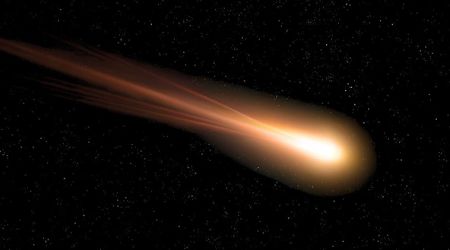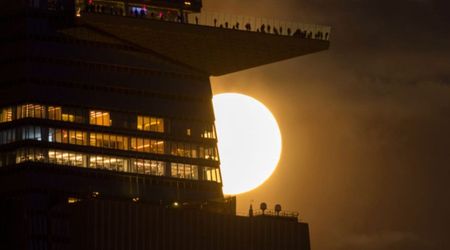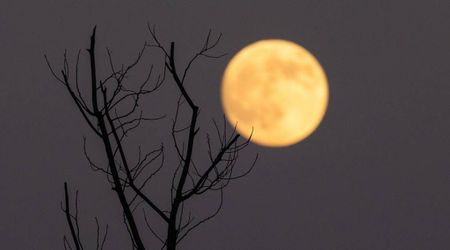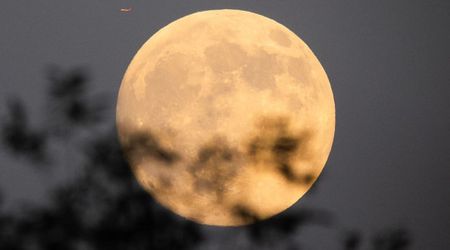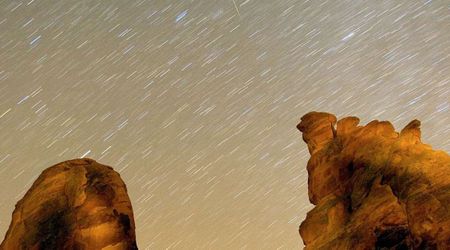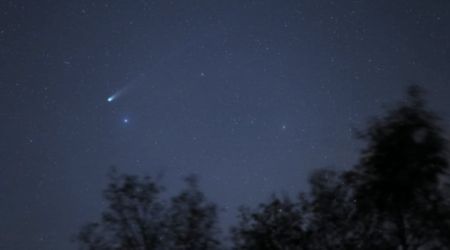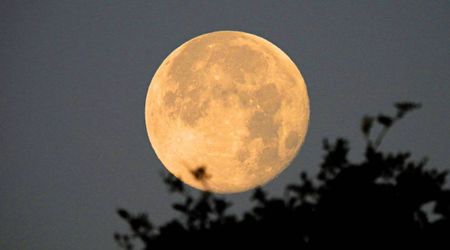Lunar Eclipses: Viewing Dates and Locations


The moon is our near-constant companion across the night sky growing from the dark new moon to the full moon and then receding back to the new moon phase each month. While it is a common sight in our night sky, there are times when it can be particularly exciting such as when it is eclipsed.
Let’s learn a little about lunar eclipses and then look at the upcoming calendar of lunar eclipses for 2023.
What is a lunar eclipse?
While a solar eclipse occurs when the moon lines up perfectly between the sun and the Earth, seeming to block the sun, a lunar eclipse occurs when the Earth is perfectly between the sun and the moon. The light from the sun bends around the Earth and then reflects back from the moon in a reddish hue. Similar to a solar eclipse, there are different levels of a lunar eclipse depending on the angles at which everything lines up and how much of the moon enters the different levels of shadow.
Fun fact: Eclipses come in pairs. Lunar eclipses occur about two weeks after or before a solar eclipse when the moon is on the other side of the Earth. There will be a total solar eclipse on April 20th and an annular solar eclipse on October 14th. If you are within the viewing areas for the solar eclipse, make sure to purchase reputable solar glasses or make your own solar eclipse viewing device.
There will be two lunar eclipses occurring in 2023:
- Penumbral Lunar Eclipse: May 5-6
- Partial Lunar Eclipse: October 28-29
Both will be visible throughout Europe, Africa, Asia, and Australia, at least as a penumbral eclipse with few exceptions. The Americas, in general, will miss out on the 2023 lunar eclipses, though parts will experience the penumbral part of the October eclipse with a few locations seeing the Partial eclipse.
Types of Lunar Eclipses
There are three types of lunar eclipses, depending on how far the moon moves into the Earth’s shadow.
Penumbral lunar eclipses
when the Moon moves through the penumbra, the faint, outer part of Earth's shadow. It is not dramatic and is often mistaken for a regular Full Moon simply with some cloud cover.
Partial lunar eclipses
When the Earth moves between the Sun and the Full Moon, but are not perfectly aligned. Only part of the Moon's visible surface moves into the umbra, the dark part of the Earth's shadow. The Moon takes on a slight red-orange hue, but not across the entire lunar surface, only where it falls into the umbra.
Total lunar eclipses (a.k.a. a Blood Moon)
They occur when a full Moon is completely blocked from the Sun’s rays by Earth's shadow. Earth’s atmosphere bends sunlight and indirectly illuminates the Moon’s surface, giving it a red-orange hue. A lunar eclipse can also be yellow, orange, or brown in color based on different types of dust particles or clouds in Earth's atmosphere that allow different wavelengths of light to reach the surface of the Moon.
During a total lunar eclipse, there are seven stages which include the previous two types of eclipses:
- Penumbral eclipse begins - Earth's shadow starts moving over the Moon with parts of it appearing in shadow, not hued or tinted orange.
- Partial eclipse begins - Earth's umbra starts covering the Moon, making the eclipse more visible as the orange-red hue traces its way across the moon as the minutes tick by.
- Total eclipse begins - Earth's umbra completely covers the Moon and the whole Moon becomes red, brown, or yellow in color.
- Maximum eclipse - the period of total, absolute coverage of the moon in the Earth’s umbra.
- Total eclipse ends - Earth's umbra starts moving away from the Moon's surface, revealing more and more of the normal hue of the Moon as it goes.
- Partial eclipse ends - Earth's umbra completely leaves the Moon's surface, with no more hues.
- Penumbral eclipse ends - Eclipse ends and Earth's shadow completely moves away from the Moon.

Dates and Locations of Lunar Eclipses in 2023
The Penumbral Lunar Eclipse on May 5th-6th will be visible in Europe, Asia, Australia, Africa, and Antarctica as well as in the Pacific, Atlantic, and Indian Oceans. As it is a penumbral lunar eclipse, it will simply look like a full moon with a shadow over part of it. The timeline will be as follows:
- Begins May 5th at 15:14:11 UTC time
- Maximum (greatest amount in shadow) on May 5th at 17:22:59 UTC time
- Ends May 5th at 19:31:45 UTC time
The Partial Lunar Eclipse on October 28-29 will be visible throughout Europe, Asia, Africa, and most of Australia. Northeast North America, much of the Eastern side of South America, and parts of Australia and Alaska will also be able to see the penumbral side of the eclipse. The furthest east of these locations will get to see the Partial eclipse. The timeline will be as follows:
- Penumbral Eclipse begins Oct 28 at 18:01:48 UTC time
- Partial Eclipse begins Oct 28 at 19:35:25 UTC time
- Maximum Eclipse (still partial) is on Oct 28 at 20:14:05 UTC time
- Partial Eclipse ends Oct 28 at 20:52:40 UTC time
- Penumbral Eclipse ends Oct 28 at 22:26:25 UTC time
For more information, including animations, maps, and customized schedules based on your location, check out timeanddate.com.
How to View a Lunar Eclipse
There is no need for solar eclipse glasses as you are not looking at the sun, but the moon, which reflects a portion of the sun’s light. It is completely safe to view the lunar eclipse as you would a full moon.
Lunar eclipses are much more egalitarian than solar eclipses as essentially the half of the Earth that is facing the moon at that moment (the night side of the Earth) will be able to view the eclipse.
Simply find a good location for stargazing. Even in the city, you will likely have a decent viewing of it as long as the sky is clear (no clouds) and you can see the moon (nothing blocking the part of the sky where it is such as buildings or trees).
Your eyes will be more than sufficient for gazing at the moon as it is the closest astronomical object to us. Telescopes are often not recommended for viewing the moon as they are a bit overkill for something so close. If you do have a small telescope or binoculars, lunar observing is best done at the edge of the moon so that your viewing device and your eyes are not overwhelmed by the amount of light being reflected off the full moon’s surface.
International Observe the Moon Night is on October 21st, 2023, providing a wonderful opportunity to learn about the moon right before the Partial Lunar Eclipse. Check out their website to see if any local organizations are offering events or resources to take full advantage of the eclipse. Or if you have a telescope and want to share your knowledge, consider volunteering to help host an event.

Conclusion
While the moon is a steadfast object in the night sky and one we may even forget about, it can still create some pretty amazing interactions with Earth and the Sun. If you are in the viewing areas for these 2023 lunar eclipses, put May 5-6 and/ or October 28-29 on your calendar to check out the lunar eclipse.
Even if you won’t be in the viewing area for these lunar eclipses, consider catching a live stream of the eclipse happening on the other side of the world, and block out some time for lunar observing during those nights as you will still have a beautiful full moon to observe.
